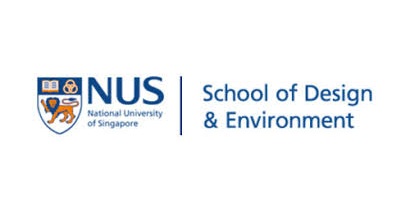Book Review: The Innovators
Preface
At the end of my AY23 S1, or more precisely speaking, just immediately after my Digital Logic Final, I didn’t know what I was thinking about that time, I just rushed to the Library and tried to find some interesting book about technology to read. I remembered at that time, since I messed my last question in the Digital Logic paper, I wanted to relax myself by finding some books to read. (I know it’s weird ah)
At that time, I had already been tired of reading some course-related textbooks, so my focus was on “storybooks”. At first I was quite at a loss, having no idea which book to read. But then I remembered one man, whose book impressed my a lot during my secondary school time. That book also inspired my passion for computer engineering, which combined software and hardware. He was Walter Isaacson, and that book was Steve Jobs(book). At here, I don’t want to talk too much about Steve Job(book), but to be honest it planted an Apple dream in my heart. Also maybe a bit tired of reading biography, I tried this book by Isaacson instead, hoep to find something useful in the innovation, as well as improving my English via reading the authentic English book.
However, finding time to read this book is hard, even though I brought this book back to my home country, I didn’t finish reading this book until the end of AY23 S2. (yeah, it took me about one semester!) Actually I would say if all in reading, then should definitely not take that much time to finish. But due to some uncontrollable reasons, it took me a long time to finish reading. One disadvantage doing so is that the long interval makes me forgot most of thing about the previous chapters. So, don’t procastinate like me. But fortunately, as a storybook, it doesn’t matter that much if you forgot about the previous chapters, but I would still highly recommended you not to do intermittent reading, especially letting the interval be very long.
Some Lessons on Innovation
Isaacson has put some food for thought inside some paragraph in some chapters. But there is such a “take away” section inside the book, which serves as a summary of all the food for thought in the previous chapters. Some points really impress me so I want to note them down.
Collaboration
Innovation comes from teams more often that the lightbulb moments of lone geniuses. One good example mentioned is about the ENIAC. This also intrigues my thought on what my school’s career coach has told me and his meaning is roughly that if you’d like to work or think alone, PHD may fit you and otherwise, if you prefer more team work, then companies may fit you in the future. At that time, I thought it was useful. But now, I think I need to rethink about this question: Scholarly research and Commercial Endeavours.An interesting exmaple used by Isaacson is Standford and MIT. While the former is suitable for those who are interested in both, the later may put more emphasis on research. From this book, Isaacson’s focus is mainly on those entrepreneurs, which I think may not be suitable for our normal people. But on a second thought, the main idea of collaboration seems to be still applicable. Doing scholarly research, which may be the main work by those PHD, is not necessarily only about lone work, from my point of view. In today’s world, I still prefer the Stanford mode, which is doing something practical, that’s about doing something to the world instead of immersing only in the academic field. I remember that scholars in Stanford often have one foot in the industry and the other in the academia. But, I still very respect those scholars who works solely in academia. I would say that without their contribution to some abstract fields, we may not truly make any world-chaning innvations.
While collaboration is undoubtedly important, the next idea also impresses me a lot.
“Stand on the Shoulders of Giants”
The name is given by me. The original sentence on the book is: “The digital age may seem revolutionary but it was based on expanding the ideas handed down from previous generations.” This is pretty close to what Issac Newton has said “If I have seen further, it is by standing on the shoulders of Giants.”The first example is the evolution in the electrical engineering, from vacuum tubes to transistors. At that time, kids can get access to these devices easily and thanks to the fast development in this field, they can get new ones after old ones. One advantage of doing so is that you can build basic computers or calculators on your own from scratch. I strongly agree that doing things by your hands is the best way to trigger your interest in a field. Also, using newer devices to replace the old ones can trigger you to think about which part needs to be improved. I really like idea of knowing how one device works from its bottom. Especially in today’s digital world, what our university and society wants is letting you know how to quickly apply one specific technology. But I think knowing the basic technology behind is much more important and interesting, which can also help the innovation on the existing things. That’s a reason why I always like to read the textbooks of the course I take at the uni. Doing things practically and understand its basic operatiing ideas behind, that’s what I think we should do to cultivate the innovation mindset.
When talking about standing on the shoulders of giants, one thing we can’t miss is Open-source. This kind of open-source free software, like Linux and free collaborative projects, like Wikipedia, are dubbed as “commons-based peer production” by Professor Yochai Benkler from Harvard. I would say it’s true, especially for those who have participated in some open-source projects. I beleve the thrill of seeing your code being added to a large project will definitely make you want to contribute more to that project, making it robust and well-maintained.
There are many other take-aways in the book, but among these, the above two resonates with me most.
Summary
As a book focusing on the innovation in tech world, this book is good to read after the finals or during the spare time. If you is interested in the history of the tech world, this book is also a not-bad choice.



